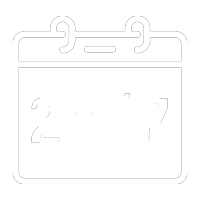

How often should we have a fire door inspection?
Building owners, managers, or designated Responsible Persons bear the responsibility of determining the inspection and maintenance routine, considering factors like door location, usage patterns, and environmental conditions. While the British Standard BS 9999 sets a benchmark of a six-month inspection interval, specific legal requirements outlined by the Fire Safety (England) Regulations 2022 specify quarterly communal door checks and annual flat entrance door checks.
Frequency of Inspections
-
Determining Fire Door Inspection Frequency:
The frequency of fire door inspections is a critical aspect of maintaining their effectiveness and ensuring overall fire safety in buildings. Several factors influence the inspection schedule, and while the British Standard BS 9999 provides a general recommendation, customising the frequency is crucial.
Here are guidelines to help determine the appropriate inspection frequency:
-
Heavy Traffic Buildings:
Buildings with high foot traffic, such as schools, hospitals, or commercial spaces, may experience more wear and misuse. In such cases, consider conducting inspections every six months to address potential issues promptly.
-
BS 9999 Recommendations:
The British Standard BS 9999 recommends six-monthly inspections for fire doors. While this provides valuable criteria, it's essential to tailor the frequency based on the specific needs and conditions of the building.
-
Building Responsibility:
The responsibility falls on the building owner, manager, or designated responsible person to determine the inspection and maintenance routine. Factors to consider include door location, usage patterns, environmental conditions, and compliance with relevant regulations.
-
Regular Maintenance Checks:
In addition to scheduled inspections, regular maintenance checks should be carried out. This proactive approach helps ensure that fire doors are in optimal working condition, addressing issues promptly to prevent the need for more extensive repairs later.
-
Compliance with Regulations:
Align the inspection frequency with local regulations and codes governing fire safety. Some regulations may specify inspection intervals, and compliance is crucial for both safety and legal reasons.
-
Customisation for Building Conditions:
Recognise that each building is unique. Tailor the inspection frequency based on factors such as the building's age, construction, and specific usage patterns. A more frequent inspection schedule may be necessary for older buildings or those with higher wear potential.
-
Proactive Assessments and Maintenance:
Regular assessments, coupled with proactive maintenance, contribute to the effectiveness of fire doors. Addressing issues promptly during routine checks helps ensure that fire doors function as intended during a fire emergency.
-
Higher Risk Residential Buildings (HRRB)
There are specific legal requirements introduced by the Fire Safety (England) Regulations 2022. Responsible persons must conduct quarterly (communal doors) and annual checks (flat entrance doors) to ensure ongoing effectiveness and compliance, contributing to overall fire safety within residential buildings.
